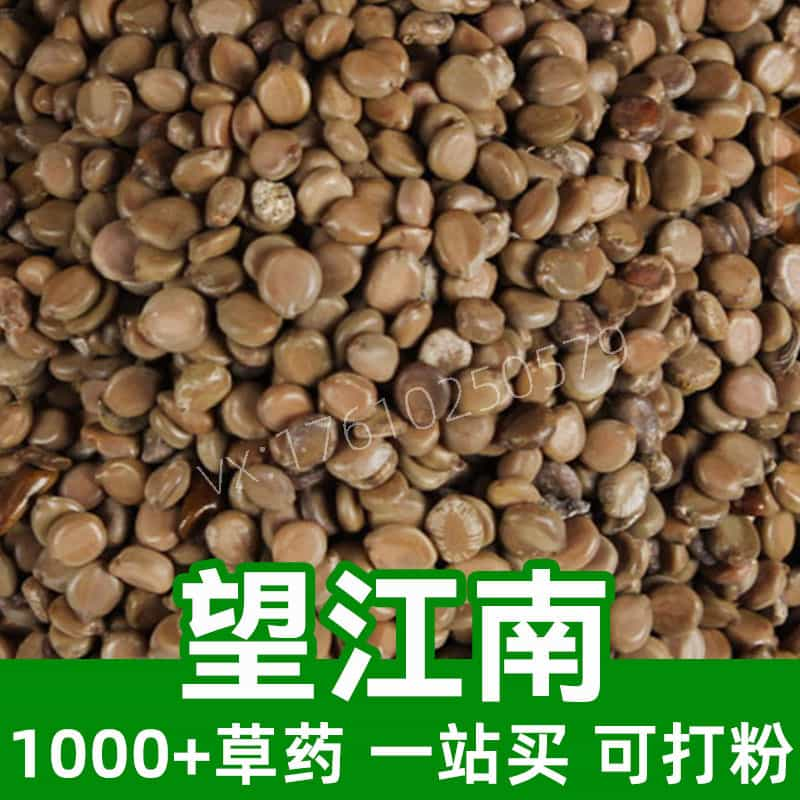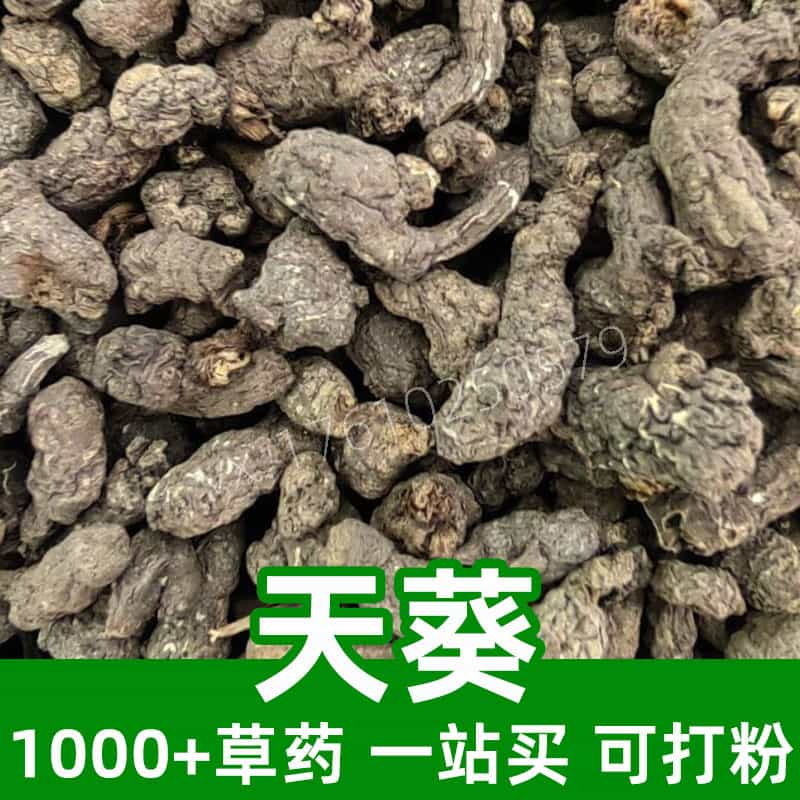Product Introduction
Siegesbeckiae Herba, commonly known as Bai Jian Cao, is a traditional Chinese herbal remedy derived from the aerial parts of Siegesbeckia orientalis, a perennial herb native to Asia. The herb features a distinct appearance, with serrated leaves and cluster-like yellow flower heads blooming primarily in summer.
Known for its beneficial properties, Siegesbeckiae Herba is rich in bioactive compounds such as flavonoids and phenolic acids, which contribute to its functional efficacy in the realm of traditional Chinese medicine (TCM). Historically, this herb has been utilized for its various health benefits and is recognized for its bitter flavor profile, which is believed to influence the liver and kidney channels positively.
Siegesbeckiae Herba is typically prepared as a dried herbal component, integrated into decoctions, teas, or other herbal formulations by practitioners of TCM. Its versatility extends to formulations aimed at promoting vitality and supporting overall health. The herb embodies a rich tradition steeped in knowledge that has been passed down through generations, solidifying its place in the modern landscape of herbal medicine.
Main Active Ingredients
The primary active ingredients of Siegesbeckiae Herba are critical to understanding its functional roles in traditional medicine. A variety of chemical compounds contribute to the herb's efficacy, including:
- Flavonoids: These are the most prominent group of compounds in Siegesbeckiae Herba. Notable flavonoids such as quercetin and kaempferol possess antioxidant properties that may help in combating oxidative stress in cells.
- Phenolic Acids: Compounds like chlorogenic acid found in Siegesbeckiae Herba have demonstrated a range of therapeutic activities, including anti-inflammatory and immune-boosting effects.
- Volatile Oils: The presence of essential oils in the herb provides aromatic properties, which may also possess mild antimicrobial activities that help to protect the plant itself and may translate to benefits in traditional formulations.
- Alkaloids: Although present in smaller quantities, these nitrogen-containing compounds may contribute to the overall health-promoting properties of the herb.
- Triterpenoids: These compounds, although less researched, are significant in many herbal remedies due to their potential neuroprotective effects.
The synergy of these compounds enhances the traditional uses of Siegesbeckiae Herba, lending to its reputation for promoting vitality and well-being. Scientific studies continue to explore the complexities of these active ingredients, aiming to validate and quantify the benefits associated with their consumption. The holistic approach embraced in TCM aligns with the multifaceted array of compounds present in this herb, reinforcing the belief in its therapeutic potential.
Product Application Scenarios, Usage, and Dosage
In the realm of traditional Chinese medicine, Siegesbeckiae Herba is primarily used to harmonize the body’s internal systems and enhance overall vitality. The herb's applications are grounded in TCM philosophies, particularly in supporting the liver and kidneys.
Usage Scenarios:
- Herbal Formulations: Siegesbeckiae Herba is often combined with other herbs in decoctions tailored to an individual's specific health needs. Commonly, it is paired with herbs that complement its effects, such as Dong quai and angelica, to enhance blood flow or support liver function.
- Teas and Infusions: The dried herb can be steeped and consumed as a herbal tea which is sought for its refreshing taste and potential health benefits.
- Culinary Uses: In certain culinary traditions, Siegesbeckiae Herba is used as a flavor enhancer or ingredient in soups and dishes, illustrating its versatility beyond medicinal applications.
Dosage:
The typical dosage of Siegesbeckiae Herba in a decoction ranges from 10 to 30 grams for adult consumers. For teas, about 3 to 5 grams can be sufficient for a single steeping. It is pertinent to note that the actual dosage may vary based on the individual's constitution, health condition, and the advice of a qualified practitioner.
As with any herbal remedy, it is crucial to consult with a licensed healthcare professional or a certified herbalist before integrating Siegesbeckiae Herba into one’s routine. They can provide personalized guidance on dosage and potential interactions with other herbs or medications.
Introduction to the Source Plant, Distribution, and Growth Environment
Siegesbeckiae Herba is sourced from the plant Siegesbeckia orientalis, a key member of the Asteraceae family. This herb is native to various regions across Asia, particularly found in China, Japan, and Korea. It thrives in moist environments, often along riverbanks, in shaded woods, or open fields.
Growth Environment:
- Soil: Siegesbeckia orientalis prefers fertile, well-drained soils enriched with organic matter. The soil's pH should ideally range from neutral to slightly acidic.
- Climate: The plant flourishes in regions with a temperate climate, enjoying a mix of sun and shade. It requires adequate rainfall but should not be overly saturated, as this can lead to root rot.
- Altitude: It can commonly be found at low to moderately high altitudes, ranging from sea level up to about 1500 meters, where conditions are favorable for growth.
This plant's distribution is mainly concentrated in eastern Asia, but it is also cultivated in other parts of the world for herbal remedies and culinary uses. Maintaining its natural habitat is paramount for sustainable harvesting, ensuring that Siegesbeckiae Herba remains a viable resource in the field of traditional herbal medicine.
Harvesting, Processing, and Storage
The harvesting process of Siegesbeckiae Herba involves careful considerations to preserve the quality of the herb.
Harvesting:
- Timing: The ideal time for harvesting is typically late summer to early autumn when the flowers are in full bloom and the plant has reached its peak potency.
- Method: Only the aerial parts – stems, leaves, and flowers – are collected, ensuring that the harvesting is done sustainably to allow the plant to regenerate.
Processing:
- Drying: Freshly harvested herb should be washed gently to remove any contaminants, followed by air drying in a shaded, well-ventilated area. Avoid direct sunlight to preserve the herb's active compounds.
- Cutting: Once dried, the herb may be cut into smaller pieces to facilitate storage and preparation for consumption.
Storage:
To maintain the efficacy of Siegesbeckiae Herba, proper storage practices are essential:
- Environment: The dried herb should be stored in airtight containers to prevent moisture absorption and should be kept in a cool, dark place away from direct sunlight.
- Shelf Life: Under optimal storage conditions, Siegesbeckiae Herba can retain its potency for 1 to 2 years.
- Monitoring: It is crucial to periodically check the stored herb for any signs of degradation or mold, ensuring that only fresh, quality herb is used for preparations.
In summary, the careful harvesting, processing, and storage of Siegesbeckiae Herba ensure that this valuable herbal resource remains effective for users in traditional and modern applications. By adhering to these practices, the integrity of the herb can be preserved, allowing it to continue serving its role in health-promoting traditions.
Monica Sun is a seasoned expert in the natural raw materials industry, with over a decade of experience specializing in traditional Chinese medicinal herbs, spices, and fungi. She is skilled in the sourcing, processing, and application of these materials, emphasizing sustainability and innovation. Monica Sun has contributed to the development of high-quality natural raw materials that serve as essential components in functional foods, pharmaceuticals, and cosmetics, delivering tailored solutions to meet diverse market needs.












